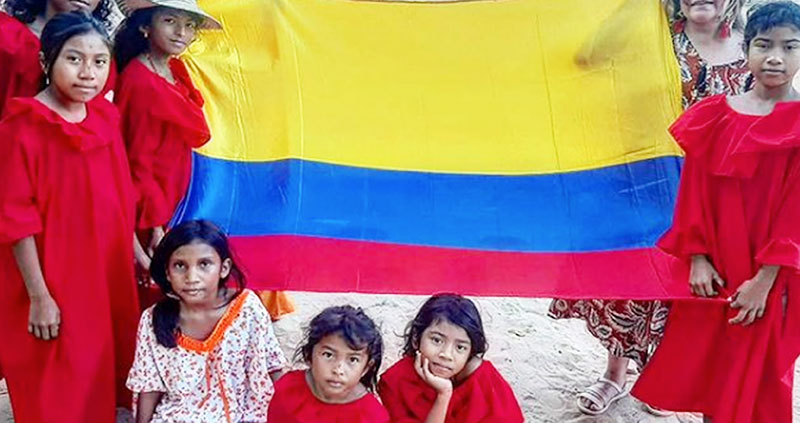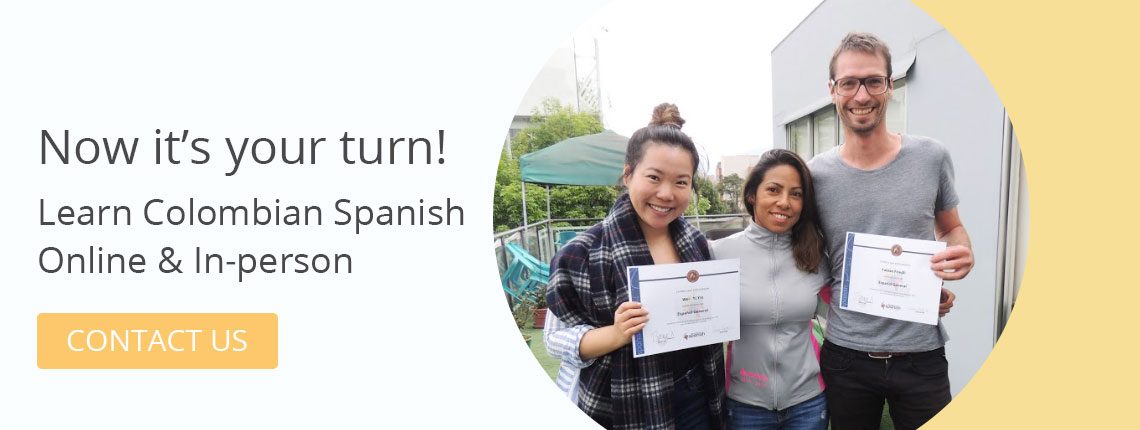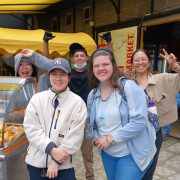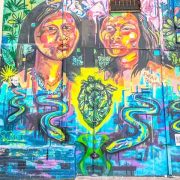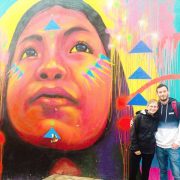Things you need to know about Wayuu people in Colombia
Did you know that there are 102 Indigenous groups in Colombia?
According to National reports, the indigenous population in Colombia is estimated at 1,500,000 inhabitants, or 3.4 percent of the total population.
The greatest number of members of these groups are the Wayuu people. They are located in the Guajira Peninsula in the northernmost part of Colombia and northwest Venezuela. They account for about 58.1% of the country´s indigenous population.
Colombian indigenous peoples, but more specifically Wayuu people are a very important part of Colombian culture, thanks to their ancient knowledge and traditions.
As we wrote in one of our last year´s articles, Colombians are characterized because of our mixed ethnicities, we are mostly mestizo. This means we are a mixture of inhabitants from Africa, Spain, and native indigenous groups.
However, despite the strong colonization period and thanks to their resilience as an indigenous group, they have managed to hold on to ancient traditions for centuries.
Getting to know the Wayuu people
One of the most beautiful things about Colombia is the immense bio and cultural diversity. Getting to experience the Colombian cultural heritage is a life-changing experience. If you have the chance to visit the Wayuu group we recommend you to do so; you will feel the energy of that mystical region, it feels like stepping through a portal in time.
The Wayuu people live in a very remote and unique part of Colombia. The landscape will mesmerize you with its deep yellow deserts that spill over the azure Caribbean Sea. That´s why they are known as the people of the sun, sand, and wind.
Spending time with indigenous people will open your eyes to different ways of life and teaches you a lot about the world, the modern and ancient world alike.
5 Important aspects of the Wayuu culture
- The Wayuu people are characterized by being a community organized by families.
- Each family has a surname and this surname is taken from the mother and not from the father as is customary in other societies.
- They have their language, however, younger generations are bilingual. They also speak Spanish, so if you are keen to visit them, and you speak Spanish it will be easier for you to learn about their culture and to connect better with them.
- Their music is tied to their economy and social life. They sing to their cattle, the animals, the environment. Also, they use music for meetings and celebrations, as well as mourning rituals during funerals.
- They are known most for the mochila Wayuu or Wayuu Bag.
Today, Wayuu bags are one of the most exported handicrafts in all of Colombia. They are widely used by locals (Wayuu), locals (Colombians), and foreigners thanks to their diversity, striking colors, and their usefulness.
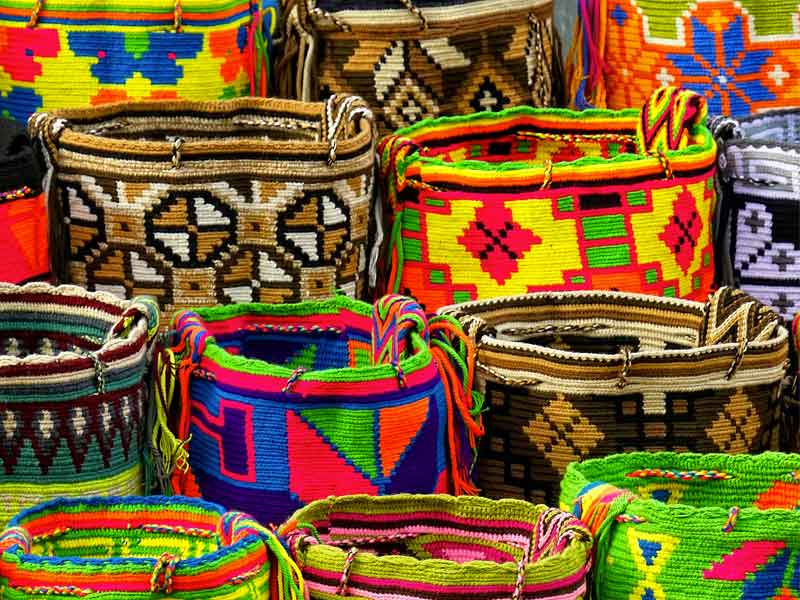
These bags are traditionally made by weaving and crocheting. Most of the Wayuu women presently weave or will do it at some point through their lives. Men also participate in the process but by making the straps, providing the materials, and transporting the final goods to the city centers.
This artisan weaving industry plays a vital role in the local economy.
Wayuu Language
The Wayuu language, called wayuunaiki, is part of the Arawak language family predominant in different parts of the Caribbean.
To promote cultural integration and bilingual education among Wayuus and other Colombians, the Kamusuchiwo’u Ethno-educative Center, or Centro Etnoeducativo Kamusuchiwo’u, started an initiative to create the first illustrated Wayuunaiki-Spanish, Spanish-Wayuunaiki dictionary.
Some words in the Wayuu language are:
- Good morning -> Buenos días -> Wattamat
- Good afternoon -> Buenas tardes -> Anas alika
- Good night → Buenas noches -> Anas aipa
- Good bye -> Hasta luego -> Oünus taya
- Thank you -> Gracias -> Anawatshuja
Angelica’s Visit to La Guajira
Now, let’s move to the fun part!
Our Administrative Director, Angélica Rocha visited this beautiful region. She very kindly shared with us her experience, videos, and what she learned during the trip.
She met a young Wayuu guy who is a local artist, and who is passionate about sharing the Wayuu culture through cultural performances, dance, and music. He’s name is Leider Jose Epinayu.
He performs traditional dances for new visitors and loves to explain the meaning of the instruments and their sounds.
Watch the following videos, and learn more about the Wayuu culture!
Dance
1. This dance is called ¨La Yonna¨. It’s a traditional dance to honor newcomers and guests.
In preparation for the dance, older Wayuu women normally paint the girl’s face for the ritual.
Katherine is the name of the girl in the video. She explains that this dance represents the superiority and power of Wayuu women in their culture.
Here, the dance, la Yonna
2. This traditional dance is usually performed by kids and it’s called “La hormiga” (The ant)
Music
Traditional Wayuu musical instruments include kashi, sawawa (a type of flute), ma’asi, totoy and the taliraai (tubular flute), wootoroyoi (a type of clarinet), among others.
The music instruments normally represent the sounds of nature.
Watch at Leider in this video playing the traditional Messi” or “ma’asi”. This instrument is made out of a local cane and it is used for sheepherding activities in the region.
In the next video, Leider plays the traditional sawawa. This instrument simulates the singing of birds, the sounds of mosquitos when flying, and, in some cases, the sound of a crying woman.
We hope you have enjoyed this article!
If you have visited this beautiful region let us know your experience! If not, go and put it on your Colombia trip bucket list!
Remember that even these indigenous groups have their language they also speak Spanish. So, if you want to connect more with locals when you visit them, learn some Spanish with us! Join our in-person classes in Bogota, or our online classes.
Also, don’t forget to follow our bi-weekly Blog and Social Media.
Oünus taya, Anawatshuja! (Do you remember what this means?)

